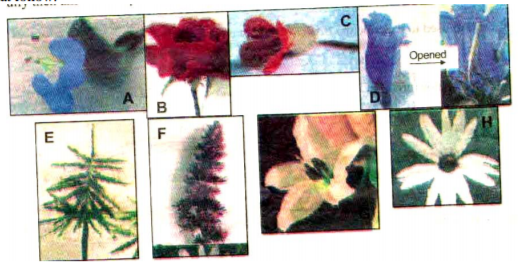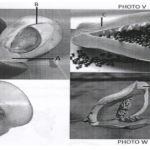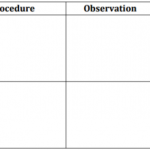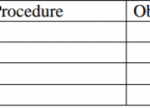KNEC KCSE Biology Paper 3 Question Paper / 2015 KCSE Tharaka South Joint Examination
2015 KCSE Tharaka South Joint Examination
Biology Paper 3
You are provided with specimen labelled M-soaked millet grains.
Grind them using pestle and mortar, adding some water to get fine solution.
Label four clean test tubes A, B, C and D.
Put about 4ml of the solution into each of the four test tubes.
a) To solution in test tube A, add some few drops of iodine. Shake the solution to mix well. Pour some little solution onto a
white tile.
i. Note down your observations. (1 mark)
ii. Account for your observations in a(i)above. (1 mark)
b) Into solutions in test tube B, add about 2ml of Benedict’s solution. Place it in a boiling water bath.
i. After about 3 minutes, record your observations. (1 mark)
ii. What is your conclusion from observation in b (i) above. (1 mark)
c) For the remaining test tubes:
To test tube C, add about 3ml of solution labelled K
To test tube D, add about 3ml of solution K and about 2ml of solution labelled L
Place both mixtures C and D in a water bath. Maintain the water bath at 370
C
Allow it to stand in the water bath for 30 minutes.
After 30 minutes, remove the test tubes. Add about 2ml of Benedict’s solution to each test tube and shake well. Place the two
test tubes in a boiling water bath. After about 5 minutes record your observations in the table below.
d) Account for your observations in the test tube C and D (2 marks)
e) i)Why was set up placed at 370
C? (1 mark)
ii. Suggest identity of solutions (2 marks)
K
L
15 marks
You are provided with photograph of specimens labelled A, B, C, D,E,F,GandH.Study them carefully then answer the questions that follow.
1. (a)Group of florets/inflorescence……………………….go to2
(b)simple flowers………………………………………..go to 4
2. (a)Florets compacted into compact heads………………compositae
(b)florets not compcted but arranged in spikes…………..go to3
3. (a)Florets conspicuous /purple in colour……………….Amaranthacea.
(b)Florets inconspicuous/green in colour……………….Graminae
4. (a)Flower polysepalous/many free sepals……………..Rosacea
(b)Flower gamesepalous……………………..go to 5
5. (a)Flowers with more than five anthers……..Umbelliferae
(b)Flowers with five or less anthers…………go to 6
6. (a)Petals form a corolla tube/gamepetalous…mimmosacea
(b)petals do not form corolla tube…………..go to 7
7. (a)Flowers with large anthers………………Solanacea
(b)Flowers with small anthers………………Ranunclulacea
Use the dichotomus key provided to Identify each specimen.In each case show in sequence the steps
e.g.1(a),2(b),7(c)…..etc.in the key that you followed to arrive at the identity of each specimen. (8 marks)
a)
b) (i) What is the likely agent of pollination of specimen C and E? (2 marks)
C
E
(ii)Briefly explain an adaptive feature of specimen C to the mode of pollination you have named in b(i) above (1 mark)
c) Describe the ovary of specimen B and G using the most suitable biological terms. (2 marks)
d) Supply a term used to describe the flower of specimen E and F. (1mark)
6 marks
The photographs below are of bones obtained from the same region of a mammal body.
a) Name the region from which bones were obtained.(1 mark)
b) Identify the bones. (4 marks)
K
N
c) State three ways by which bone K is adapted to its function. (2 marks)
d) Giving a reason, name the type of joint that would be found in the animal at the proximal and distal ends of bone N.
Proximal end (1 mark)
Reason (1 mark)
Distal end (1 mark)
Reason (1 mark)
e) What is the significance of the part labelled J in the bone N?(1 mark)
f) Make a drawing to show how bones M,boneM and bone P are articulated (2 marks)
10 marks











